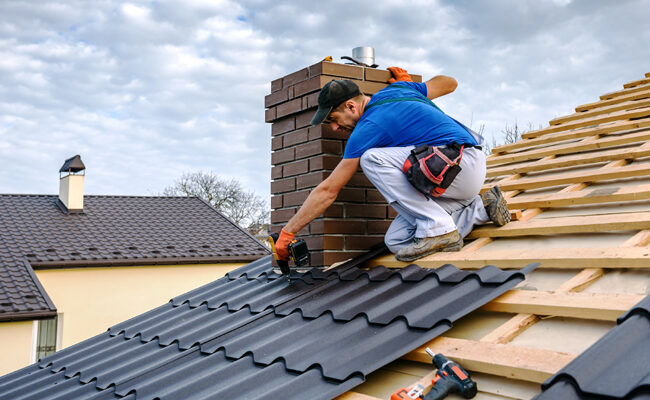
It is your first line of defense against the elements, not to mention being the most visible elements of the house. Your roof is the one area you don’t want any compromises with, right? Well, you’ve come to the right place. Let’s help you ensure it stays in one piece by looking at some of the roofing mistakes you’ll want to avoid:
Covering Over Worn-out Shingles:
You’ve noticed that part of your roof has gotten damaged or somehow deteriorated quicker with age and bought new shingles. And then comes this seemingly-genius idea: Why not just place them over the worn-out shingles? It’ll take much less effort, and you will get an extra layer of protection for backup.
Well, here’s the problem: You have just created the perfect repository for dirt and moisture to accumulate. The new shingles will consequently wear out quicker than you can say, “Shoddy repair job!” Always make sure to strip out the old layer when replacing shingles.
Poor Flashing:
This means material that is of low quality, mismatched, or re-using your old flashing when roofers are replacing your roof. While it might appear as a peripheral accessory, flashing is actually a core part of your roof, keeping moisture away from vulnerable spots. Cutting corners here puts your home at risk of leaks and water damage down the line. Besides investing in high-quality flashing, you want to make sure it’s installed correctly.
Mismatched Shingles:
There are certain sections of your roof that require specialized shingles; it is important that they match the regular ones in both color and build quality. That means you want to order everything from the same batch. While ordering from multiple sources could save you money upfront, the use of mismatched shingles will significantly degrade the performance and look of your roof.
Granted, it can be difficult to find matching shingles when you’re replacing a section of your roof. But at least try to order from the same manufacturer, or else look for something that comes as close as possible.
Lack of Moisture Barrier:
Effective as shingles are at disposing water, they cannot do the job properly by themselves. The failure to install a moisture barrier underneath increases the risk of water penetration. This can be particularly costly if your region gets a substantial amount of snow. Ultimately, there’s no sense foregoing moisture protection when you’ve already paid good money for quality shingles; do yourself a favor and have it installed wherever necessary.
Improper Overhang:
Aesthetic appeal aside, overhangs serve a crucial role in protecting your roof from strong winds. Having your shingles terminate right at the edge in a bid to save money doesn’t make sense, once again. Provide a sufficient amount of overhang, and make sure to use enough fasteners.
Defective Fasteners:
Now that fasteners have come into the picture, we should highlight how important it is to be careful when purchasing them. Using nails that are too short, or of poor quality, is bound to compromise the roof’s integrity. Far too many homeowners have made such mistakes and ended up regretting.
Also note that the manner in which fasteners are driven makes a huge difference in their ability to keep the roof in place. Check that each nail goes in at the right angle, and that the shingle is left in one piece. Torn shingles are a recipe for leaks.
Poor Ventilation:
Roofs need venting to stay effective. Without sufficient ventilation, the roof’s inner surface is exposed to a continual buildup of heat and moisture. This not only accelerates decay, but it also creates a conducive environment for the growth of mold and fungi. Not to mention that your AC system will have to work harder to manage the heat; this is especially problematic in older houses that weren’t built with enough ventilation.
Your roof needs at least one square foot of vent area for every 150 sq. ft. of attic floor, according to the latest building codes. It’s also crucial that the total vent space be distributed evenly across the intake & exhaust ports.
Not Working With an Experienced Contractor:
Be sure look for an accredited, experienced roofing contractor as you plan your next roofing project. Poor workmanship — both from inexperienced contractors and unqualified homeowners — has led to the downfall of too many a roof. In fact, almost all of the issues we’ve discussed can be avoided just by engaging a roofing company with a good track record. Don’t let yourself down here.
Leave a Reply